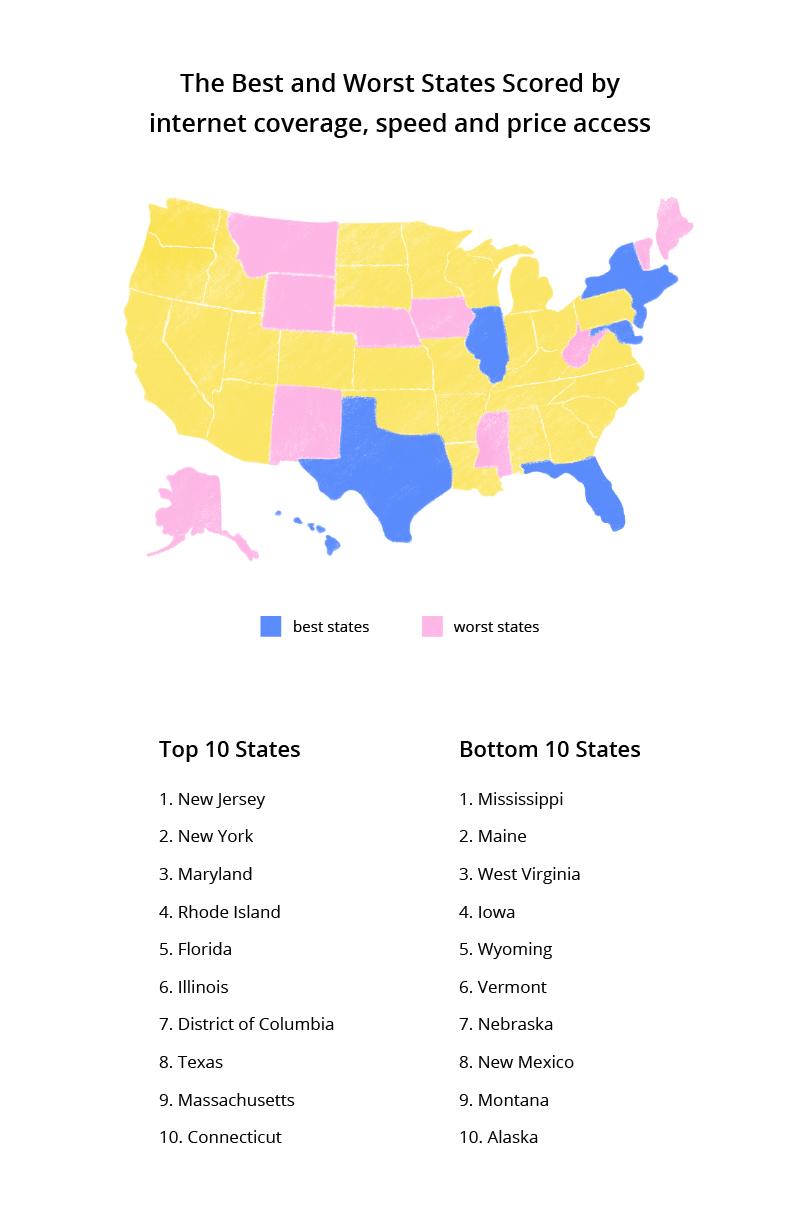According to statistics, more than $1.7 billion is being lost annually due to the low Internet speed or poor connection. Also, as studies say, if an application (or a website) doesn't load well, almost 75% of potential users would leave it. Still further, more than 45% of these users would never return to the platform that has failed them.
Therefore, today developers must supplement the highly demanded Mobile First concept with another one, which is also gaining popularity: namely, the Offline First approach. Simply put, it's time to think about developing an offline application. After all, you don’t want to lose your would-be users, right? That's what we’ll talk about in our new article!
What are offline apps?
We think you understand that offline mobile app services got such a name due to their ability to operate without an Internet connection. Though, why should they? In the 21st century, it may seem, there mustn’t be any problems with Internet coverage... However, these problems do exist, even in developed countries like the USA.
Don't you believe us? Then pay attention to the infographics below.

It brings us back to the need to provide our users with the perfect offline app experience. In other words, the application has to work regardless of Internet availability (as well as its speed).
How do offline-ready apps work?
First, let's look at how regular online apps operate. The fact is that the data they’re dealing with is usually stored on the server: this is very convenient since all content is concentrated in one place, which results in a simplified synchronization process. However, such an approach leads to the need for continuous interaction of the user device with the server in question (in order to gain access to the necessary information).
The situation seems to be clear... but it means it's impossible to make an app work offline at a high level, isn't it? In the end, there will be no connection with the server!
Don't worry: the task of building offline mobile applications is difficult but quite feasible.
The thing is, many apps work with data, which doesn't require constant updating. Thus, the device has no need to request new information from the server all the time. It's enough to store part of the content in the application, that is, on the smartphone itself (or another device).
Let's briefly summarize what you need to consider in order to develop an offline mobile app:
-
Timely synchronization. Allow users to work with applications offline, but don’t forget to synchronize data with the server when an Internet connection appears again.
-
Moving part of the content to the application. As we’ve explained above, you need to store some content on the user device itself. It’ll reduce the need for frequent access to the server.
-
Smart notifications. Of course, don't forget to notify the user that the Internet has disappeared, and the program was forced to switch to the offline version of an app.
When should you consider offline app development?
It's time to figure out, in which industries creating an offline-first app would be a smart idea. Surely, there are many options, we’ll give only the most popular examples:
-
Games and mobile entertainment, which is the most obvious option.
-
Traveling. A lot of people, being abroad, turn off access to the Internet (among the reasons are its high cost or the desire to save smartphone battery power). That’s why mobile apps for travel agencies often include offline guides and tools. So mobile tourist guides with offline access would definitely come in handy.
-
News, guides, and directories. We're talking about various kinds of information resources, whether it be an offline news app or a mobile city guide.
-
Training and education. Discussing the way an app works offline, we've mentioned that the most demanded information should be stored on the user's device. And when it comes to educational mobile programs, moving part of the data to the smartphone storage is an easy task. Indeed, most of the lessons and training programs don't require constant updating.
-
Children-oriented programs: games or educational services… or anything aimed at a child. Offline apps for kids are useful to parents who don’t want their children to have Internet access (since the Internet is full of dangerous temptations).
-
Medicine. Imagine the situation: a person feels bad and wants to resort to his healthcare application to call an ambulance… Agree, it'd be great if he can perform such a task even without the Internet. So medical apps must have offline support.
-
Online shopping. Do you think shopping apps can't work offline? You’re mistaken, they very much can! Just move the main product catalog to the application. Of course, making a payment requires an Internet connection anyway, but, at least, the user would be able to select products offline.

Now let’s take a closer look at the top benefits of offline mobile app development.
Key benefits of offline-first apps
Okay, why should you build an app that can switch offline and online? What are your benefits?
#1 Low internet connectivity is no longer a problem
The first of many benefits of offline app development is the chance to provide users with the opportunity to be independent of having an Internet connection. Thus, they’ll have less reason to remain dissatisfied with the interaction with your mobile service.
#2 Gain more customer loyalty
The previous item leads to this one. Understanding that the application has online and offline versions, the user is sure he can take advantage of it in any situation. This is especially true for customer loyalty program apps used in areas with inconsistent connection.
#3 Control over the caching process
Offline mobile applications provide you with a great way to efficiently manage caching steps. Surely, such an opportunity isn’t something to be neglected.
#4 Simplified work with storage
If you store all the data on the server, you must be sure there is always a powerful network and a stable connection... alas, it's out of your hands to provide these perfect conditions. Though, you may solve the problem by building an offline-first app: thus, you get the opportunity to update information on the server as necessary (and if possible).
#5 Fast loading process
An offline app loads faster since it doesn't depend on the server operation or the quality of the Internet connection. And the user can enjoy your mobile service wherever and whenever he wants — a key principle in how to build a travel app for frequent travelers.
#6 Saving your battery
The above benefits of creating an app that works offline, namely, ease of caching, fast program loading, efficient data storage management, result in the device’s battery saving. This is especially helpful in cases where a user isn't sure he would be able to find a place to charge his smartphone during the day (say, he is traveling abroad).
#7 Successful competition
Apps that work without an internet connection are always ahead of their competitors. Of course, any customer would prefer the program offering him more features and better working conditions (including the possibility to use the application offline).
By the way, speaking of competition… Let's discuss your most successful rivals who resorted to offline mobile app development and didn't regret their decision.
Best offline apps: follow their lead
Take a look at the below examples of offline apps; they might inspire you to create something of the sort too.
Spotify
Spotify is a world-famous music application you’ve probably heard about (maybe you used it too?). It gives access to a huge number of songs for every taste. What's more, you're allowed to set the offline mode and listen to your favorite tracks even in the absence of the Internet.
Kindle
The Amazon Kindle is a great reader application with online and offline versions. Among the advantages of the service, there are the following options:
-
synchronization with the account, which allows the user to continue reading from the place where he finished enjoying the book last time;
-
saving all the last settings (selected fragments of the text are also saved);
-
options to facilitate reading (the ability to change font size and style, background color, screen brightness, etc.);
-
search on the page by words;
-
support for modern text file formats: PDF, TXT, AZW, PRC;
-
and, of course, a convenient offline mode!
TripAdvisor
Among the popular examples of offline apps, TripAdvisor, a very special travel program, should also be mentioned. It offers many useful features allowing tourists to travel expertly. And most importantly, TripAdvisor provides offline access to a number of options, including detailed reviews, maps, and images (which is true for more than 300 cities).
Google Drive
Although Google Drive is one of the world leaders in cloud storage services, it took care of offline support too. A user just has to turn on the option of access to offline mode, and he'll be able to work with the file regardless of the availability of the Internet (naturally, synchronization with cloud storage is also provided).
Offline Dictionaries
The name is very eloquent, isn't it? Undoubtedly, the program belongs to a number of offline mobile app services.
The Offline Dictionaries application has a huge database with all kinds of words, phrases, idioms, and synonyms and supports more than 50 languages. And, of course, the traveler can use the app without worrying about accessing the online mode (he just needs to download the languages of interest to the device).
Google Maps
In the past, the offline version of Google Maps left much to be desired. Fortunately, the company improved its service, and the updated Google Maps has an intuitive, user-friendly offline app design and advanced functionality (which is available even without an Internet connection). The user is allowed to download detailed city maps and take full advantage of them in the offline mode conditions; what’s more, these maps will be automatically deleted in a month (such an approach helps to avoid the situation of overloading the device’s storage without a real need).
Problems you may face when developing offline mobile apps
Offline mobile app development isn't an easy task and involves a lot of difficulties... which ones and how to overcome them? Let's take a closer look at them!
#1. Quality sync
When working offline, your application cannot use updated data stored on the server. However, when the Internet connection reappears, the program must synchronize the information… which isn’t as easy as it might seem!
On the one hand, an offline mobile app cannot always download absolutely all the data if there is too much of it. On the other hand, the application has to send its own information back to the server (if the user has made any changes during the period of the Internet’s absence).
So what do we have? Firstly, your program mustn’t be using an outdated, irrelevant database. Secondly, overloading the smartphone’s storage with unnecessary information would be a wrong move too. Therefore, you have to find a middle ground, the perfect balance enabling the service to work efficiently, quickly, without failures. And all of this complicates the offline app development process.
#2. Competent search
The second difficulty developers face when building offline mobile applications is the search feature. And there are several key aspects:
-
The accuracy of the results. Of course, the user wants to get the most accurate result, which would meet all his requirements. And you should take into account numerous factors: the location of the user (especially when it comes to searching for some institution, restaurant, etc.), similar queries, rating, and much more. If the online mode is available, the situation becomes simpler: the application can resort to the numerous search queries made earlier by other users. However, if an app works offline, it has to do without these helpful tips. The solution to such an uneasy problem depends on the developer. We offer some of the most common options:
-
a more thoughtful approach to moving data to the smartphone’s storage (namely, it's important to figure out which kind of information stored might help speed up the process of future searches);
-
the use of the properties and features of the smartphone itself (the same GPS definition, which will help to produce results taking into account the user's location);
-
preparation of pre-calculated search queries.
-
-
Search speed. Creating an offline-first app implies that in the absence of the Internet, the program cannot rely on a powerful server. And this may lead to a decrease in the speed of the search process (after all, no smartphone has server capacities!). Again, there are many suitable solutions, ranging from the use of special, speed-focused search software to the preliminary processing of the most relevant queries (and storing them in the device).
Summary
Are you ready to start? Then let’s consider your development options!
Of course, there are various offline app development software and ready-made templates, which you can use. However, if you intend to achieve the perfect result, consider building an offline-first application from scratch. Creating a platform from square one is always longer and more expensive, but it has a better chance of success. The choice is yours!




